Produced on the occasion of David Lieske’s exhibition Dritte Ausstellung Fuer Photographische Arbeiten at Galerie Karin Günther, Hamburg, 3 March–6 May, 2022. In addition to documentation of the exhibition it contains a conversation between the artist and Nicholas Tammens. Designed by Atelier Maève.
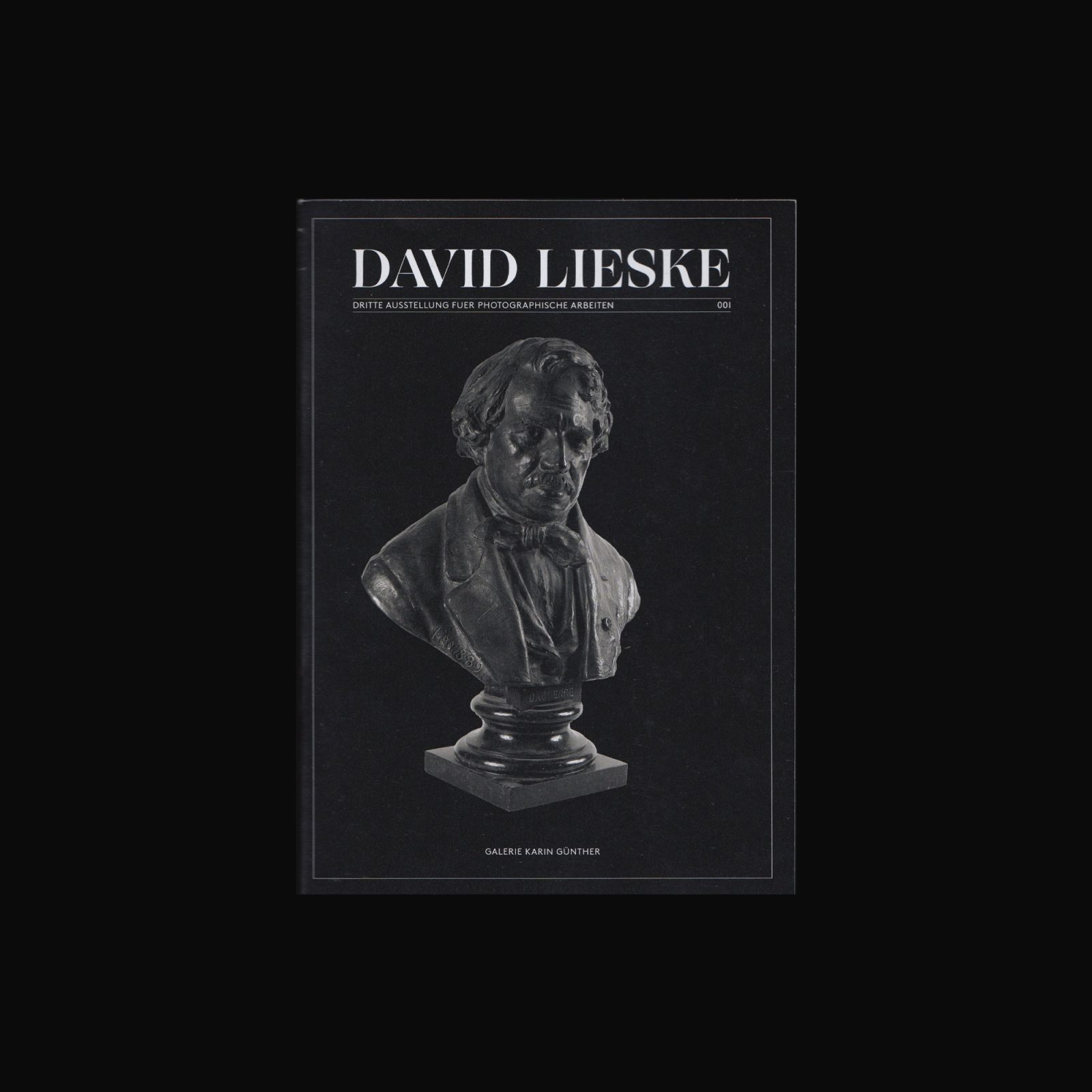
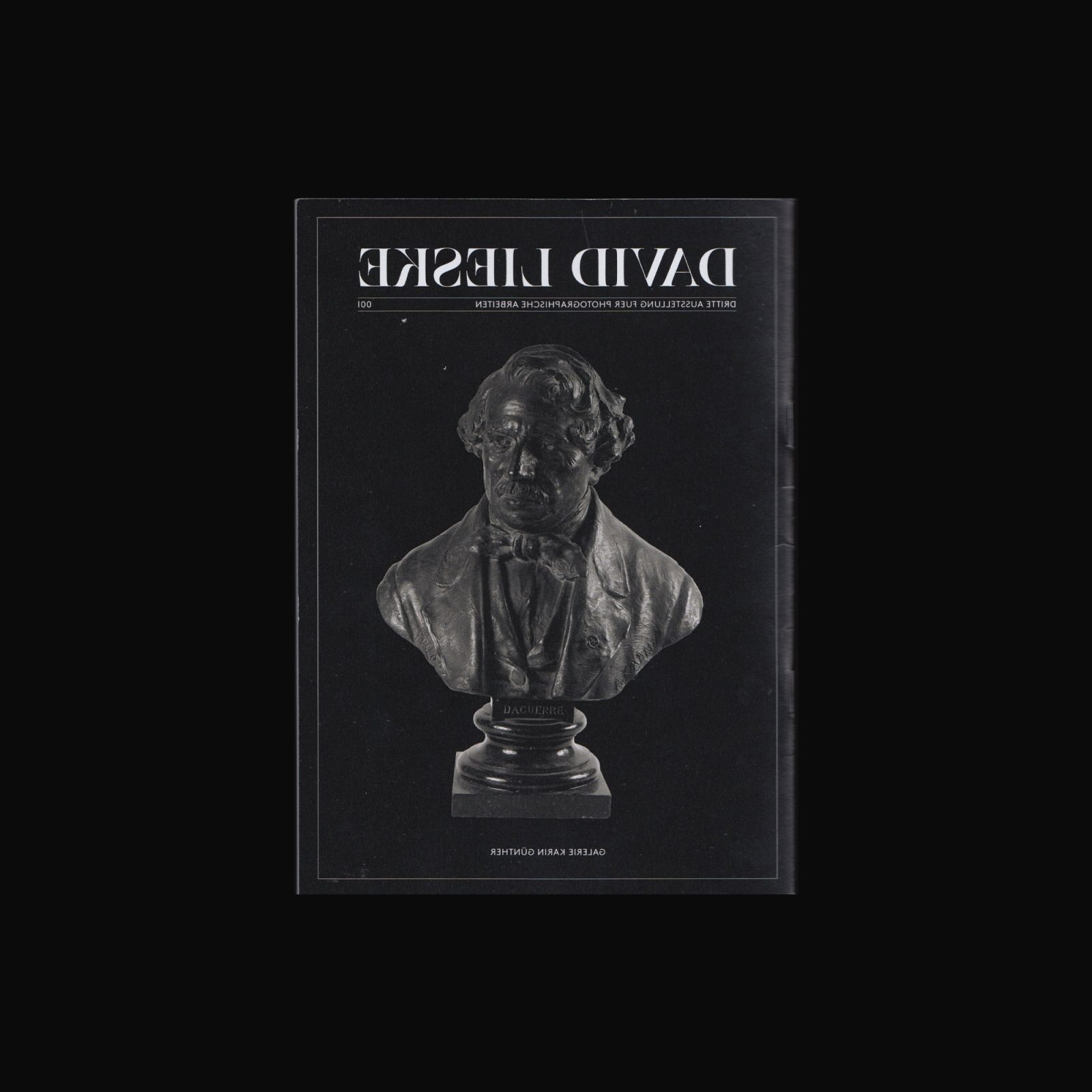
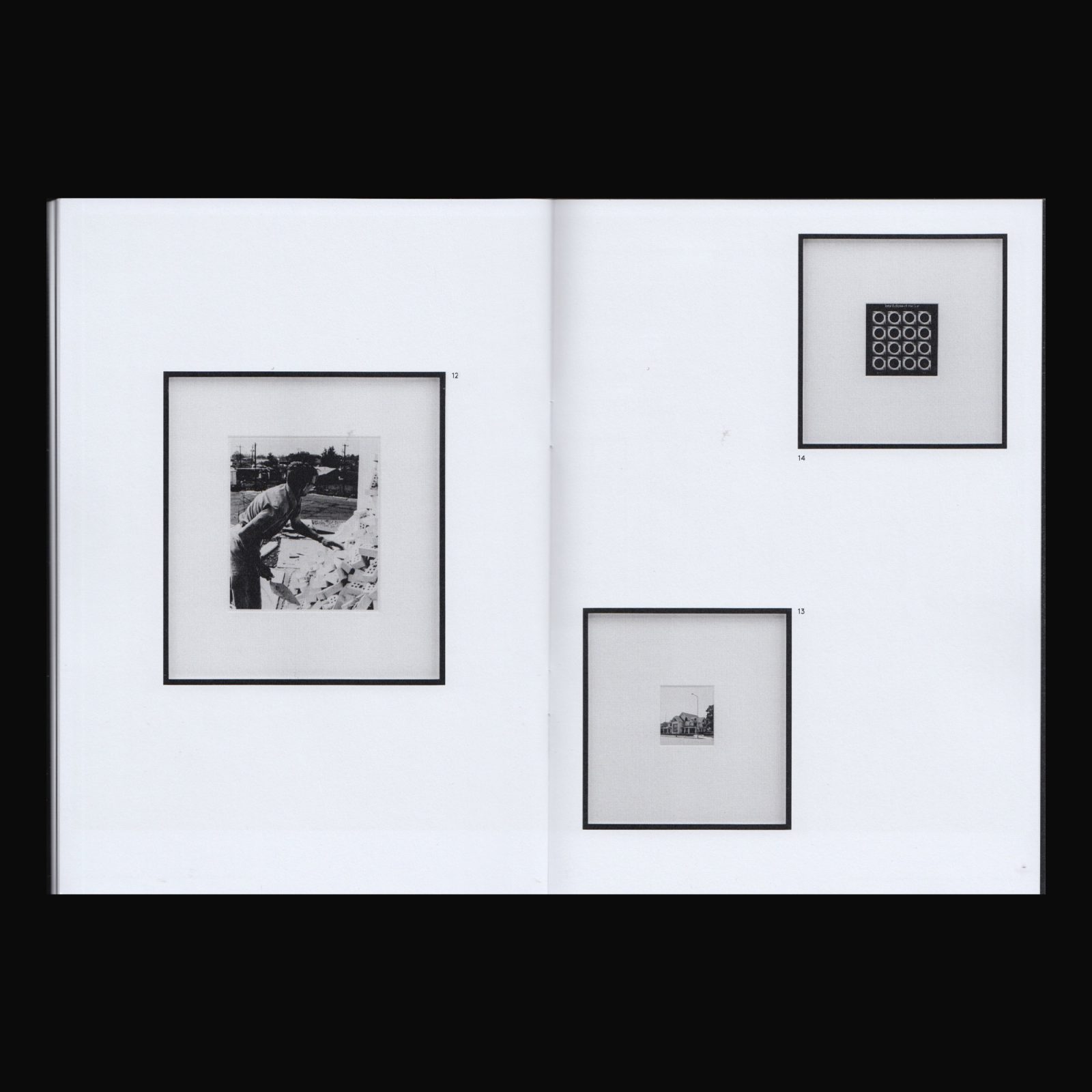
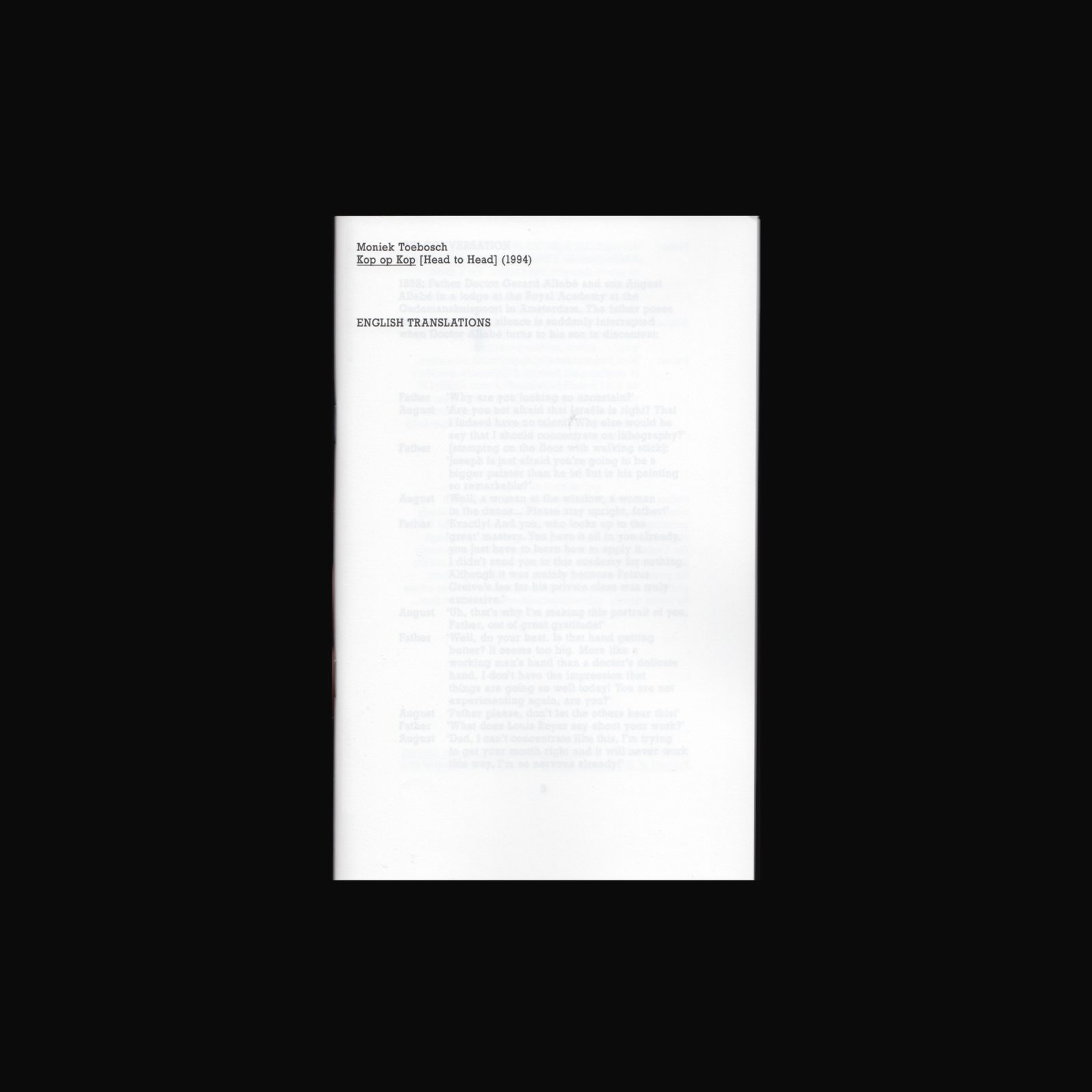
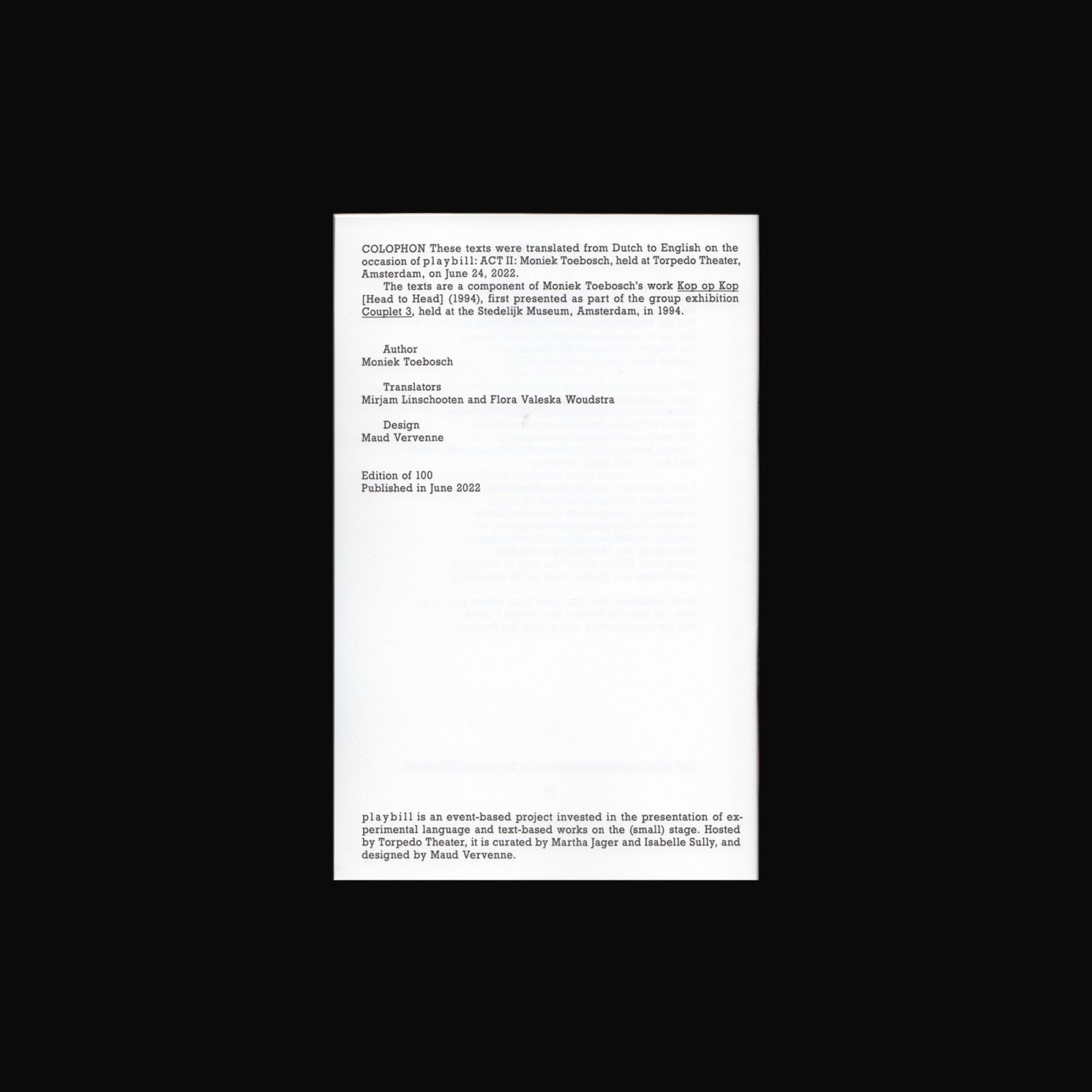
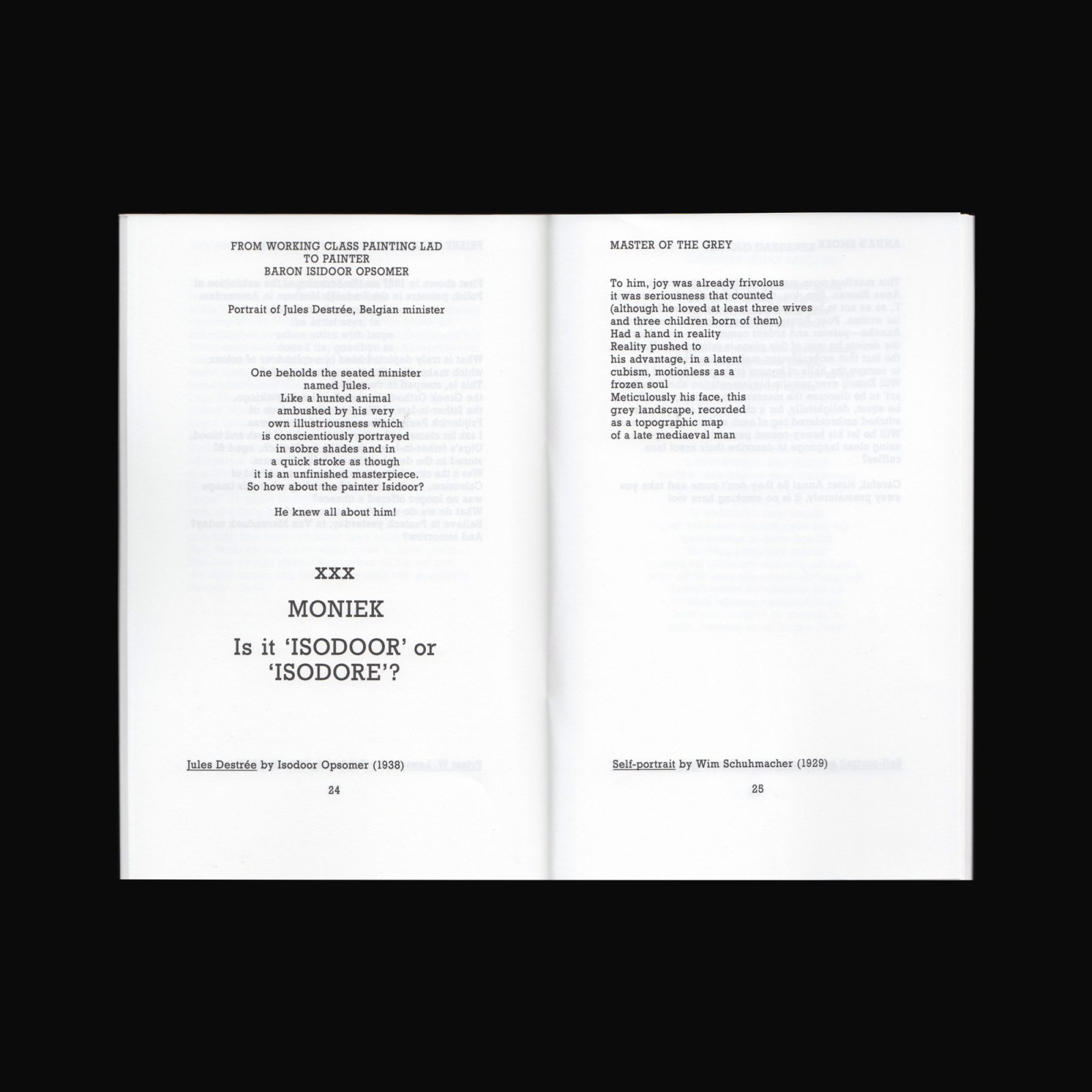
Booklet of English translations produced on the occasion of Playbill Act II: Moniek Toebosch at Torpedo Theatre, Amsterdam June 24, 2022.
Directly engaging with the theatrical setting of Torpedo Theater, the forty-five short texts composing theater-maker, artist, educator and broadcaster Moniek Toebosch’s 1994 work Kop op Kop [Head to Head] were performed as a one-person play by television and radio presenter Adeline van Lier. First exhibited as part of the Stedelijk Museum’s 1994 exhibition Couplet 3, the work—for which Toebosch wrote monologues and poems to accompany a selection of portraits held in the Stedelijk Museum’s collection—is one of many pieces produced by Toesbosch that interweave text with performance and/or its implications.
Designed by Maud Vervenne.
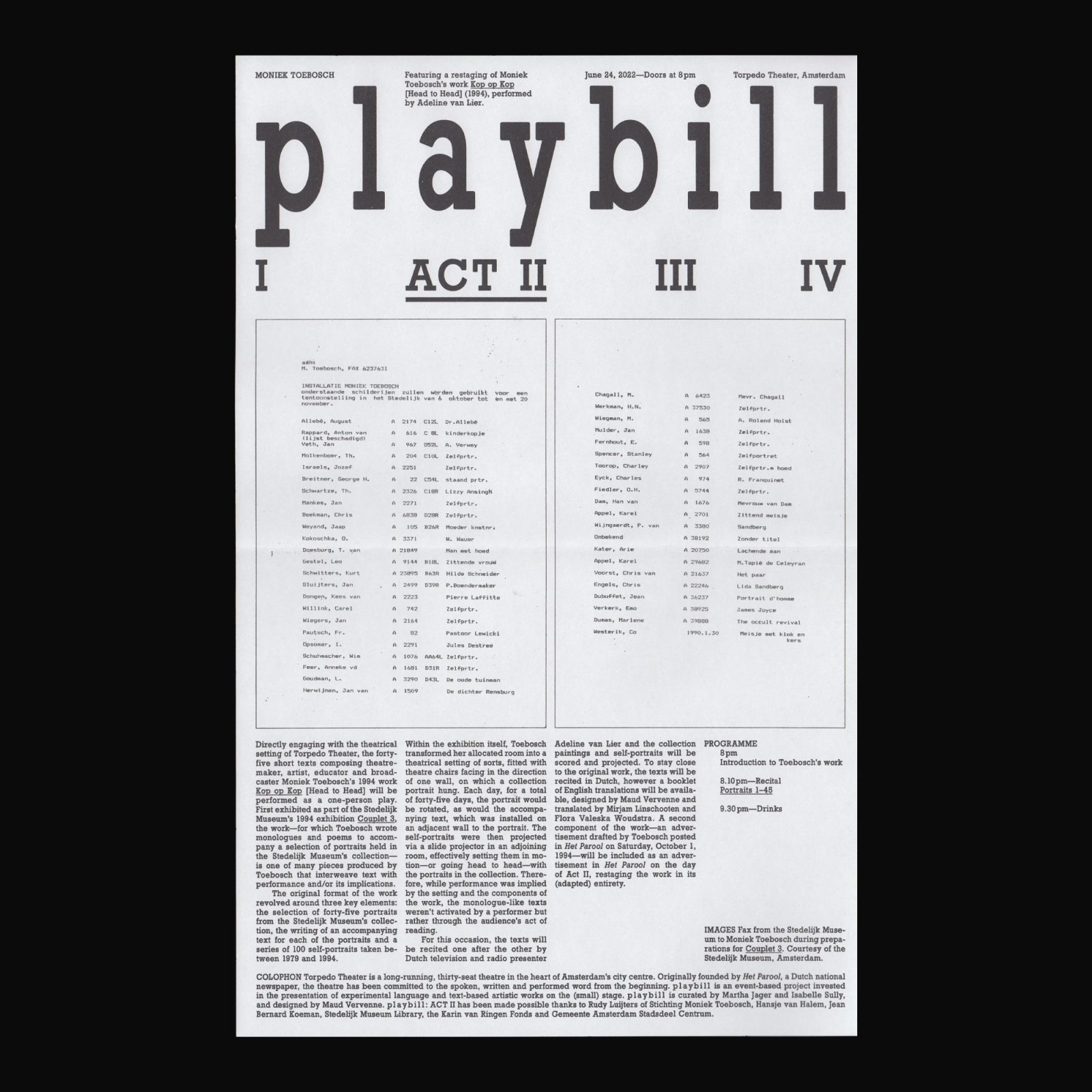
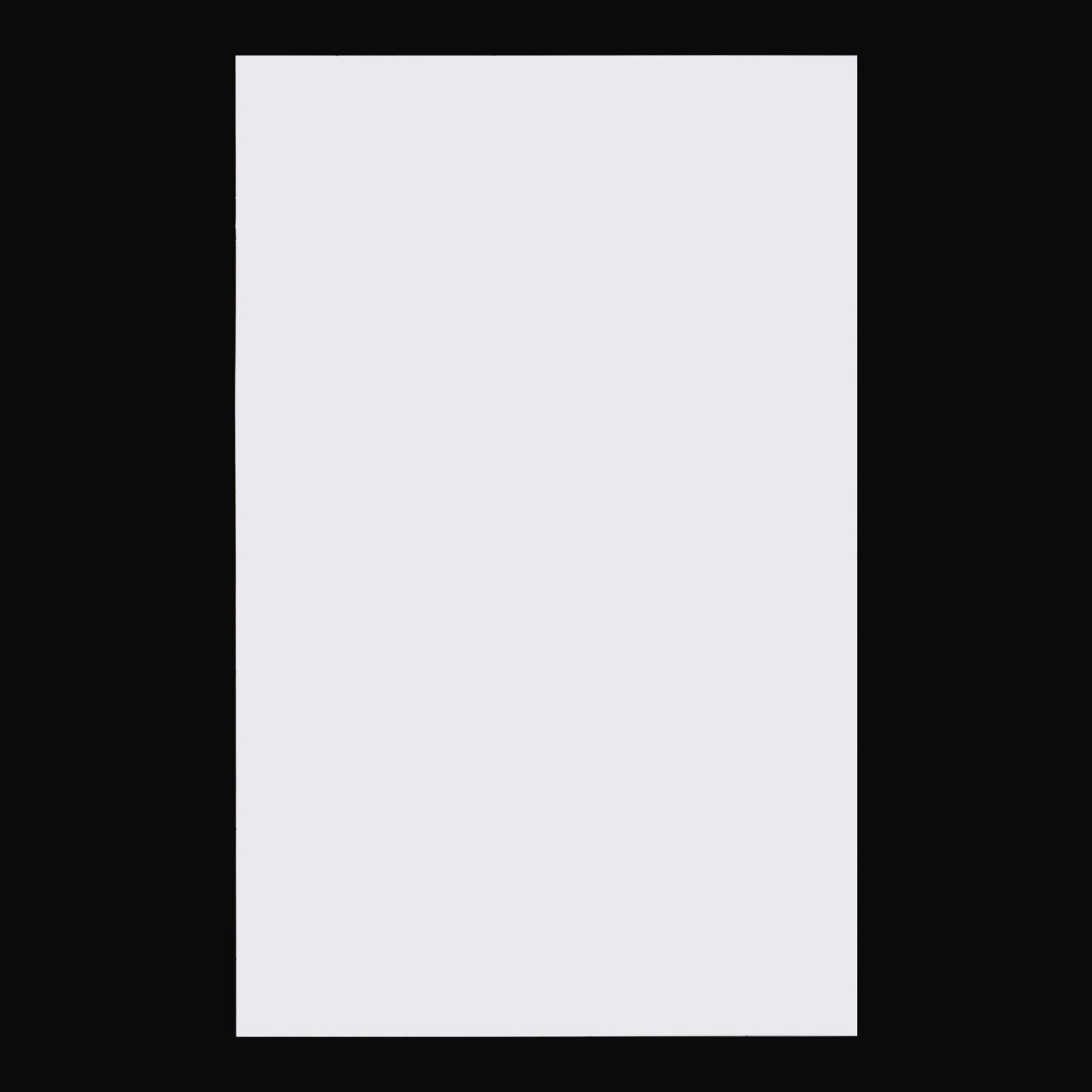
Programme produced on the occasion of Playbill Act II: Moniek Toebosch at Torpedo Theatre, Amsterdam June 24, 2022.
Directly engaging with the theatrical setting of Torpedo Theater, the forty-five short texts composing theater-maker, artist, educator and broadcaster Moniek Toebosch’s 1994 work Kop op Kop [Head to Head] were performed as a one-person play by television and radio presenter Adeline van Lier. First exhibited as part of the Stedelijk Museum’s 1994 exhibition Couplet 3, the work—for which Toebosch wrote monologues and poems to accompany a selection of portraits held in the Stedelijk Museum’s collection—is one of many pieces produced by Toesbosch that interweave text with performance and/or its implications.
Designed by Maud Vervenne.
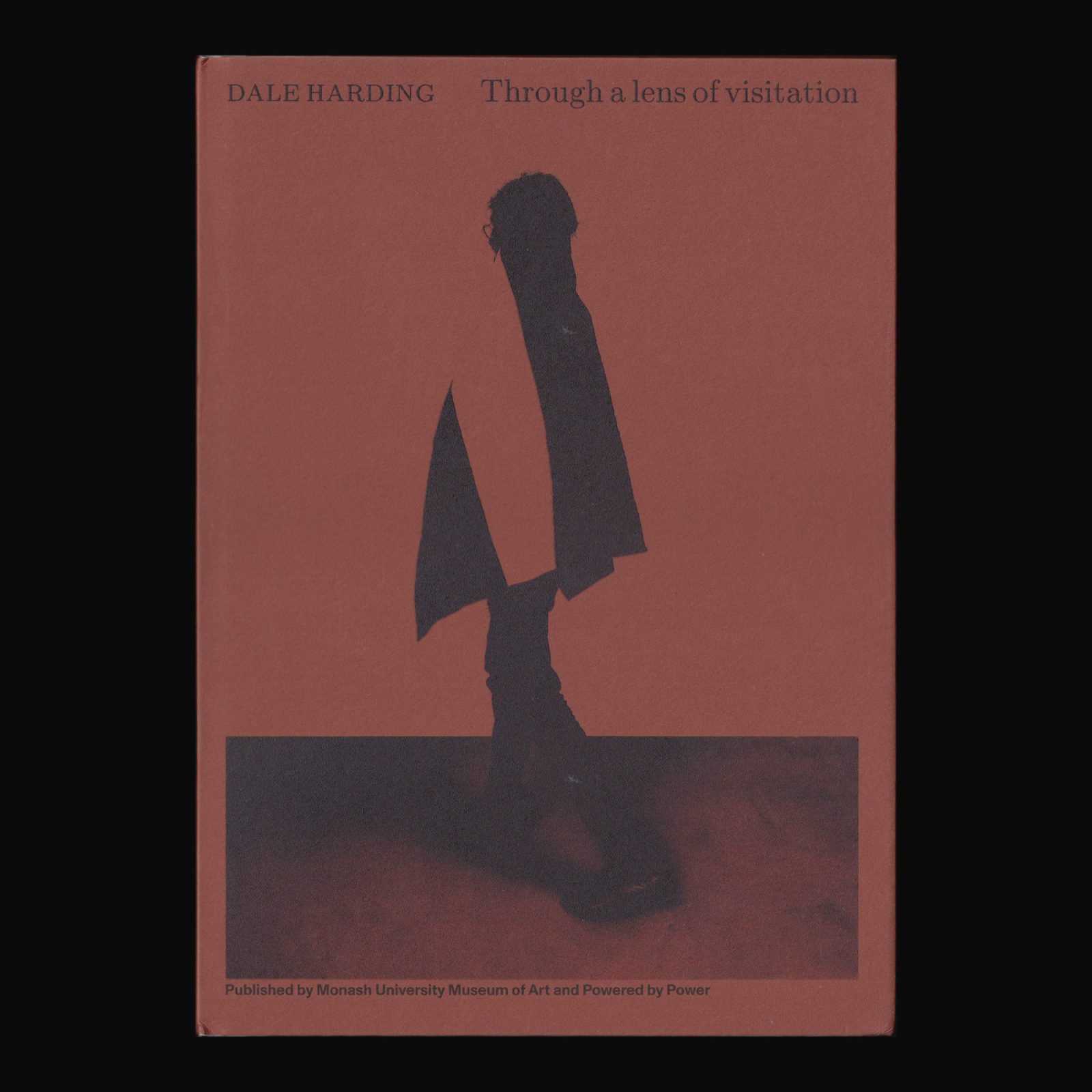
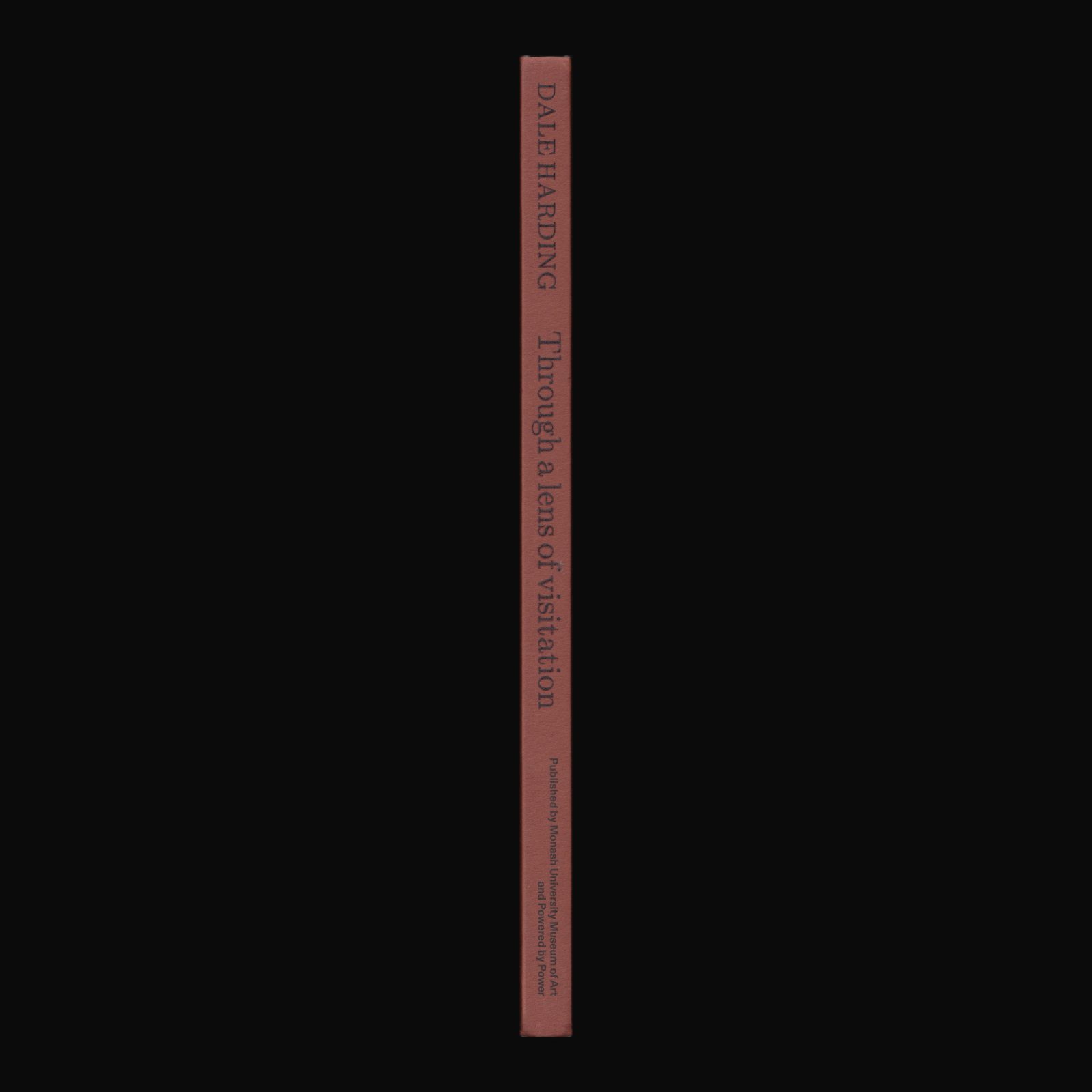
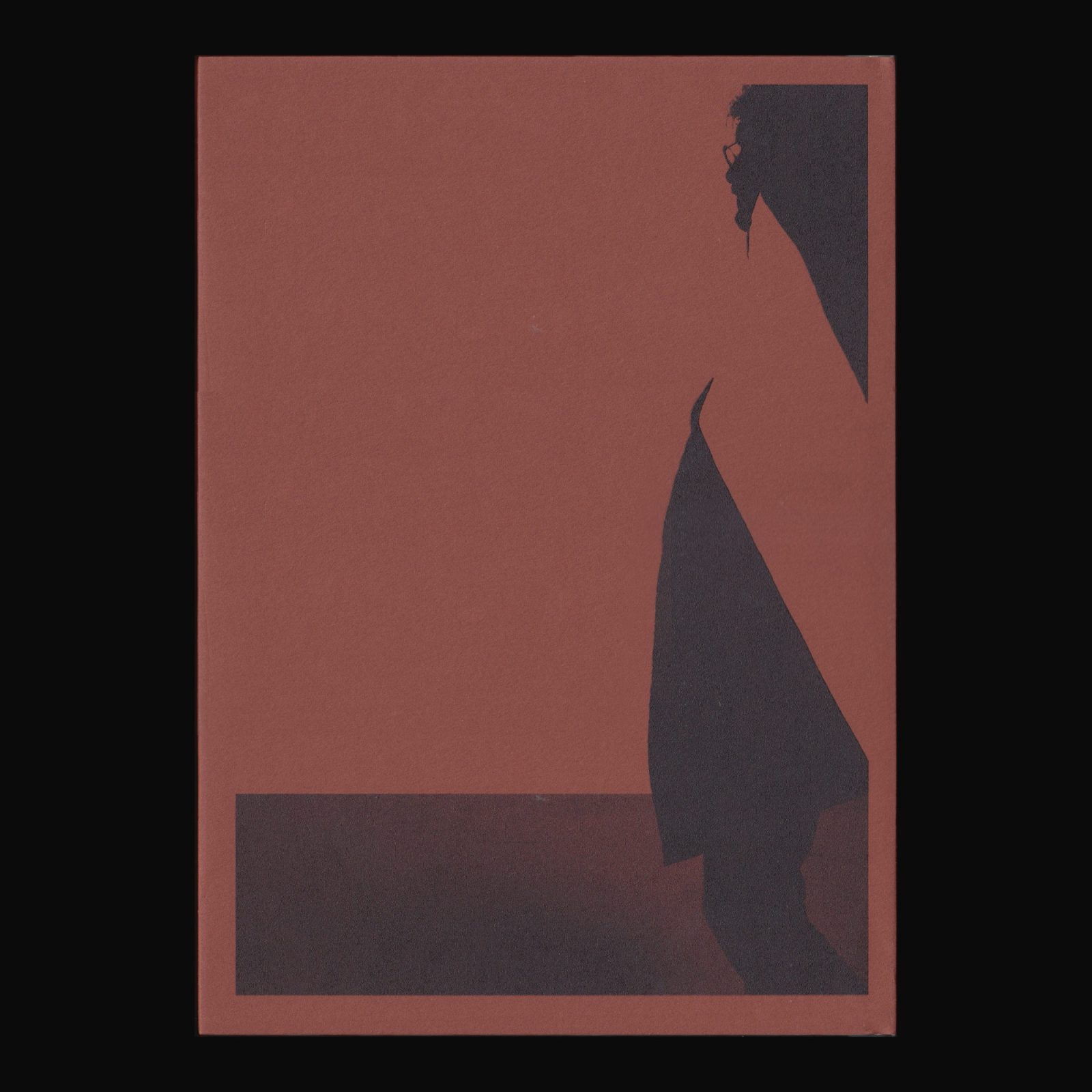
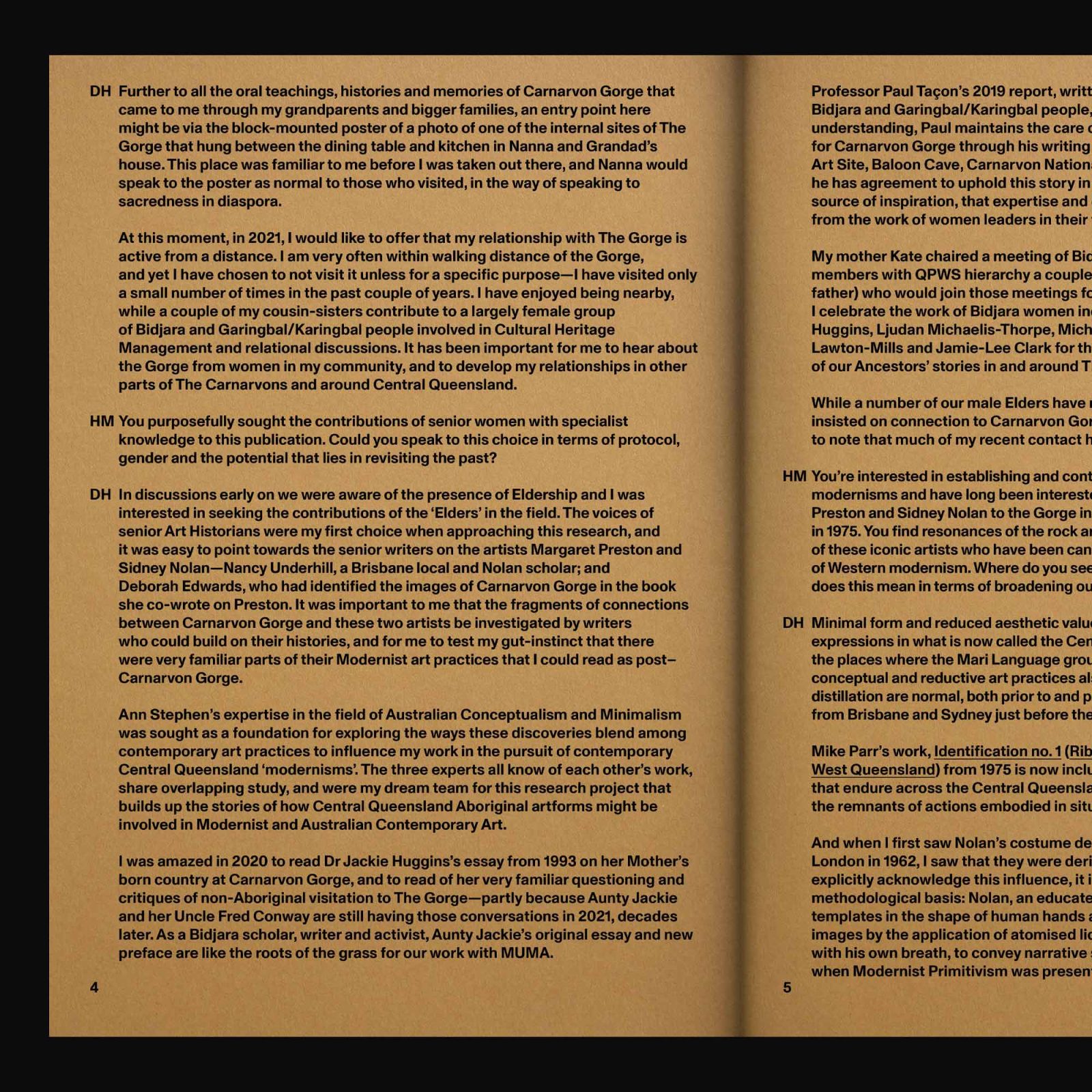
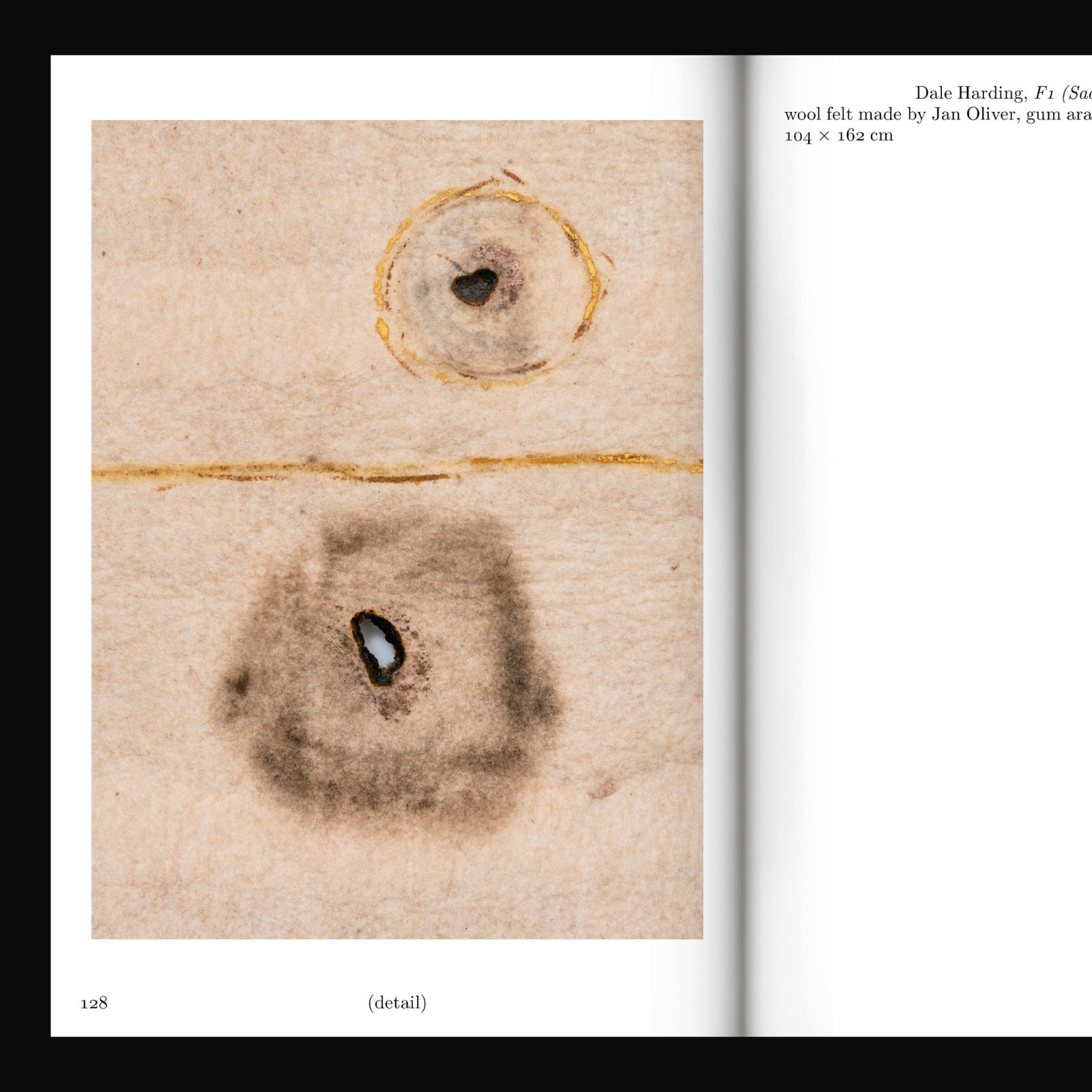
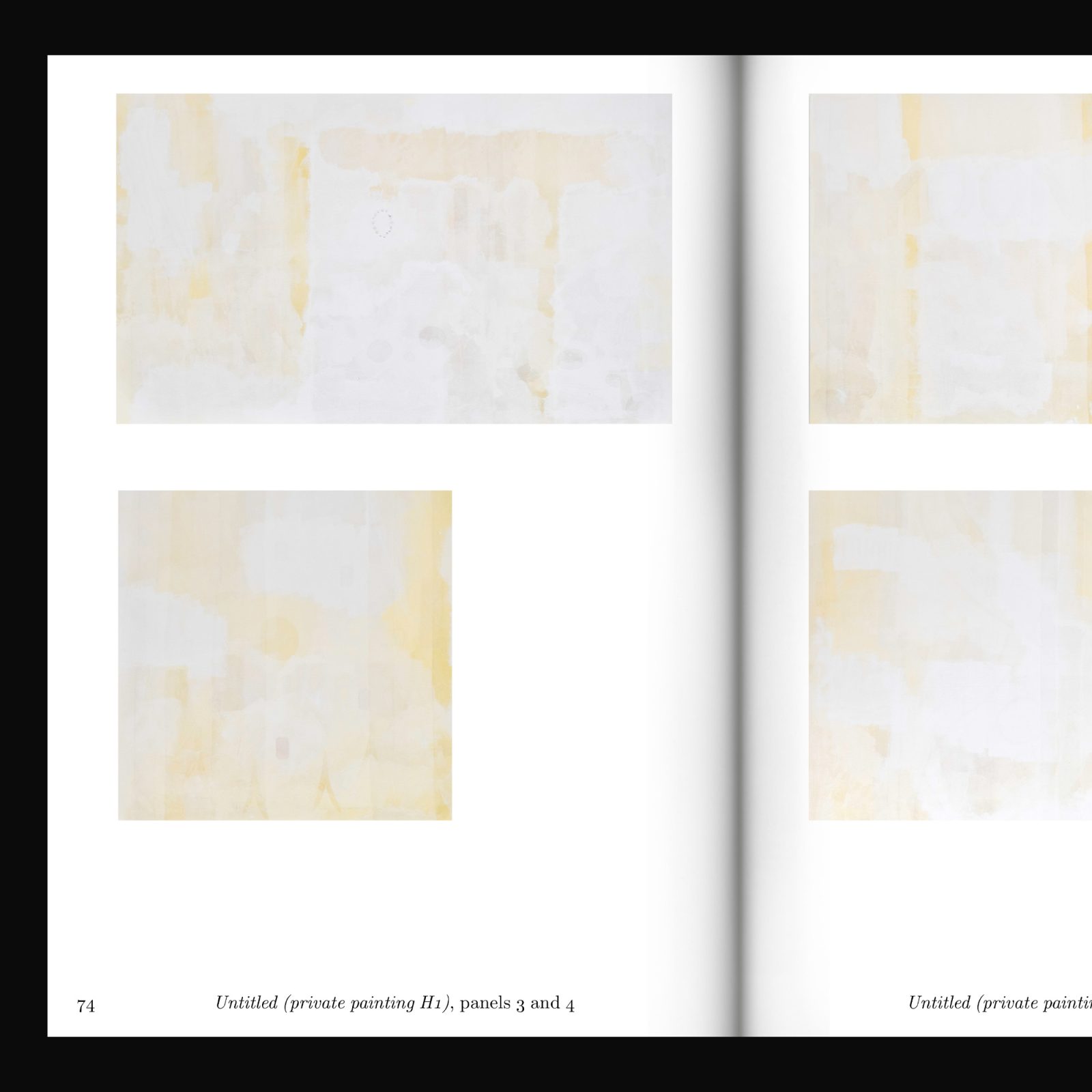
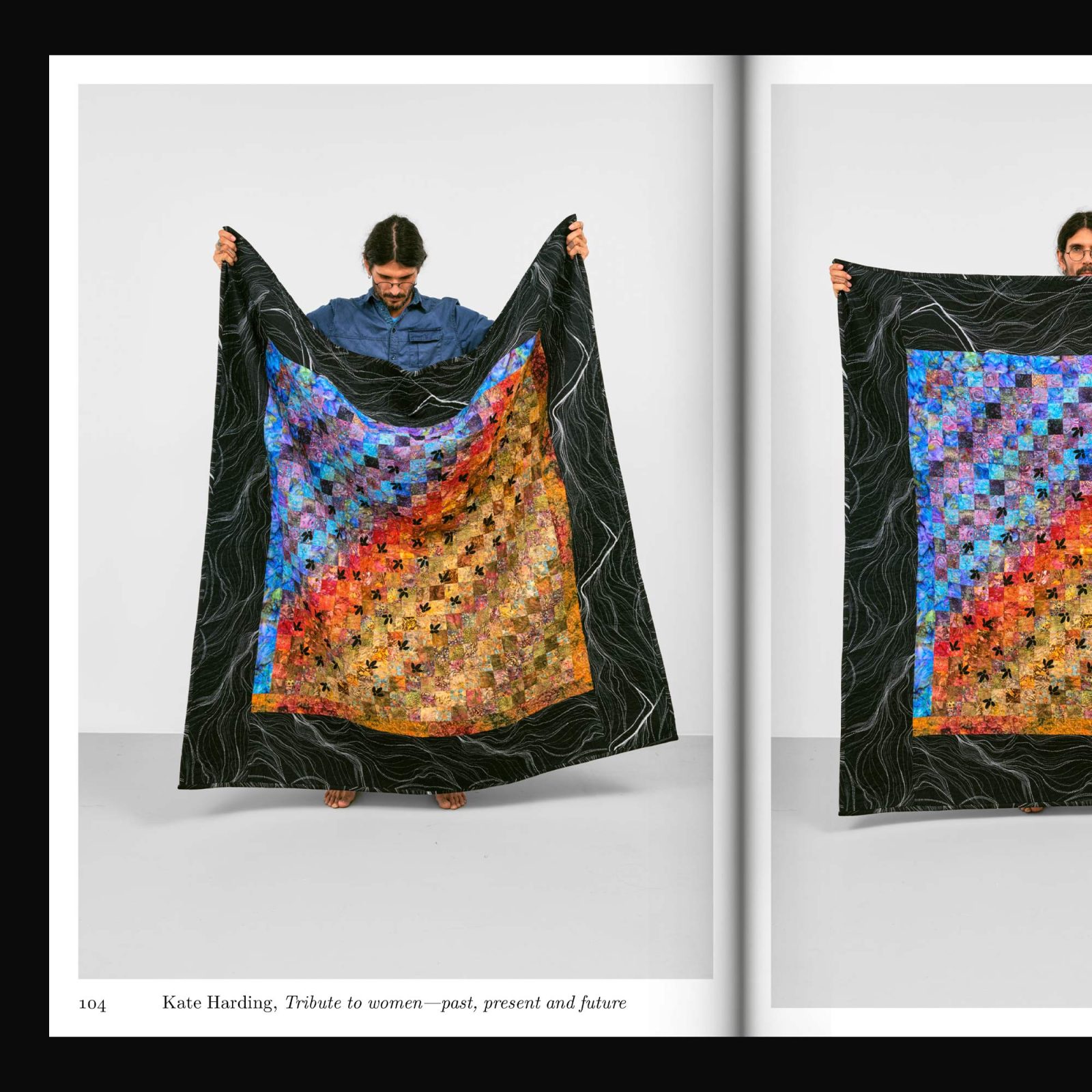
A descendant of the Bidjara, Ghungalu and Garingbal peoples, much of Dale Harding’s multilayered practice is motivated by the cultural inheritances of his families, who originate in the Fitzroy Basin and the sandstone belt of central Queensland. Harding’s works pay homage to the stories and presence of matrilineal figures in his family.
Produced to accompany an exhibition of the same title at Monash University Museum of Art (MUMA) and the Chau Chak Wing Museum, University of Sydney, Through a lens of visitation specifically explores the artist’s relationship to his mother’s Country of Carnarvon Gorge and documents a major new commission and first-time collaboration with his mother Kate Harding. A textile artist, who since 2008 has employed quilt-making to tell her stories of family, culture and Country, Kate Harding’s quilts are presented alongside painterly responses undertaken by Dale Harding across various mediums.
Edited by Hannah Mathews and Dale Harding. Designed by Stuart Geddes and Žiga Testen.
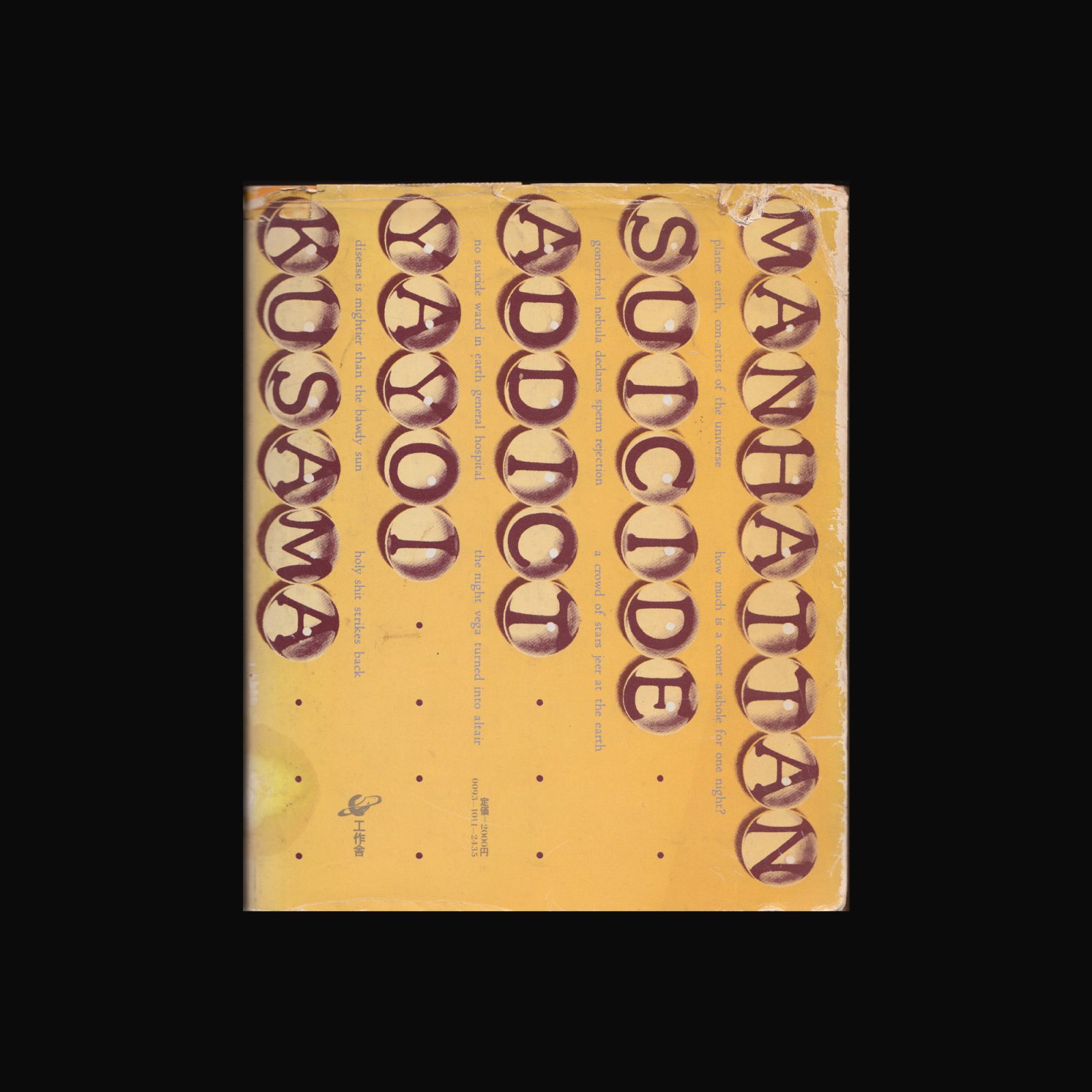
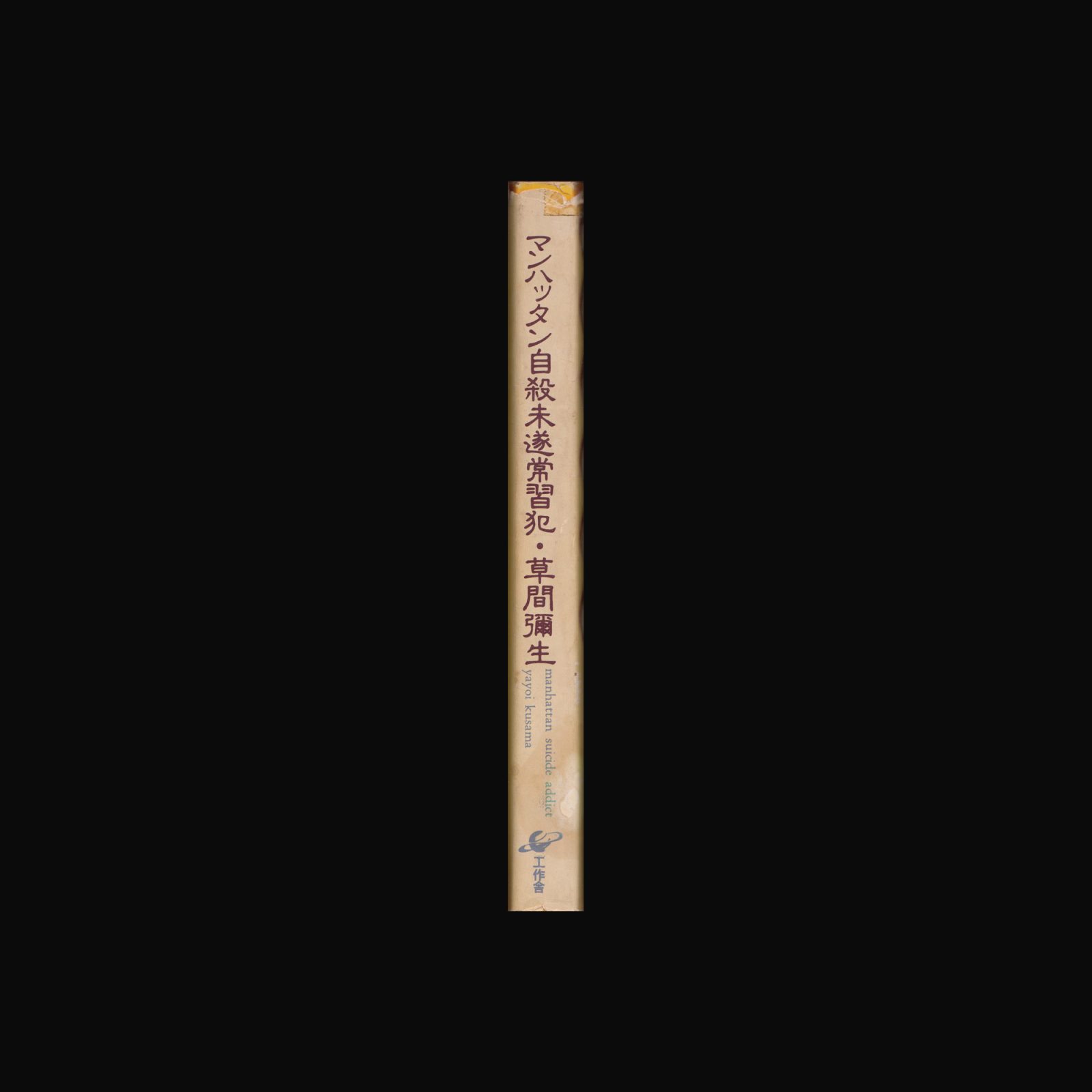
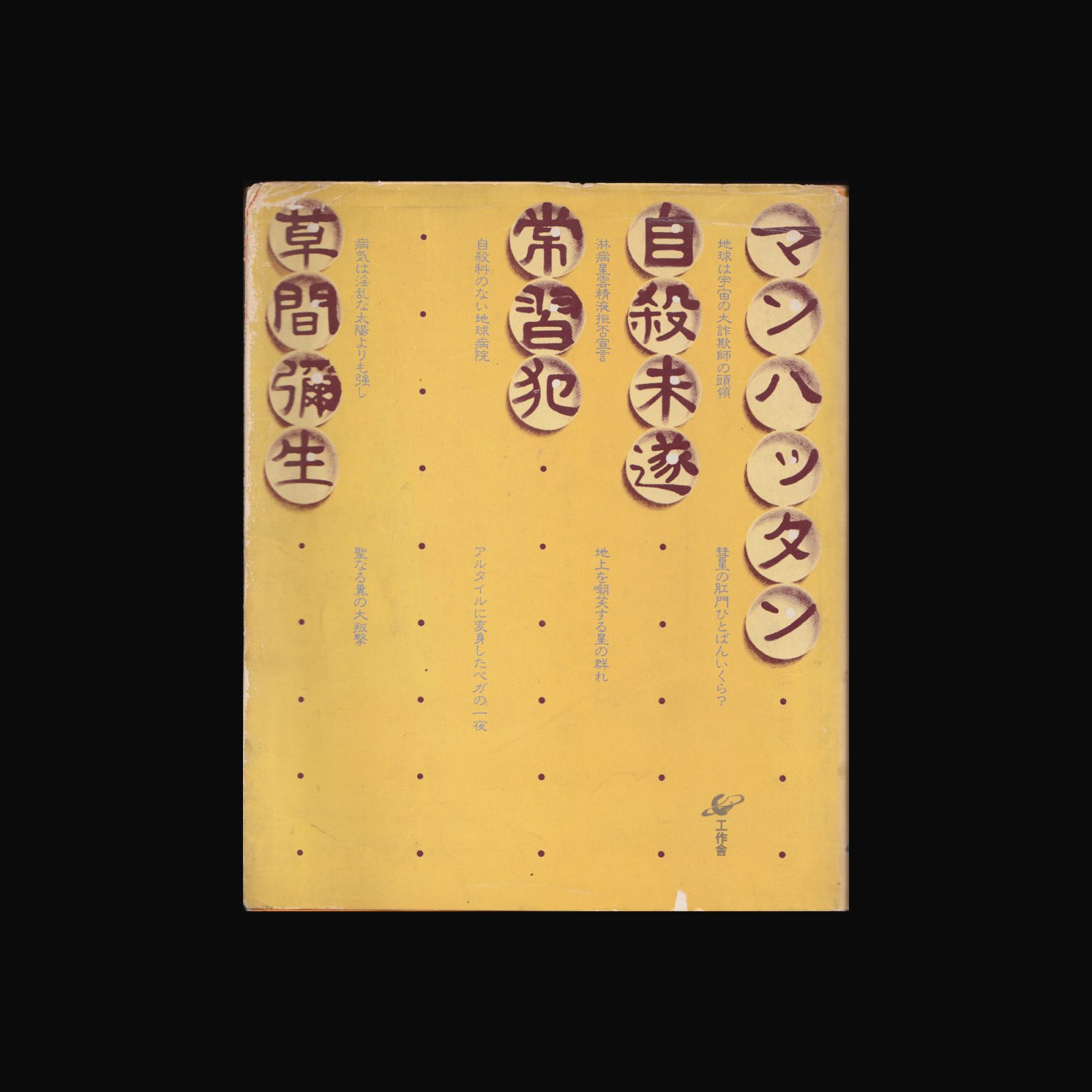
First Edition of Yayoi Kusama’s first novel, published in Japan in 1978 and never translated into English, is best described as a faux autobiography, describing Kusama’s years in New York in the 50s and 60s. Having left behind a strict family life in post-war Japan, Kusama entered a period of heightened creativity. She was free to make what she wanted, but plagued by fears of intimacy and inadequacy. Her art became a form of therapy, and she went on to create a unique body of work that not only parallels and transcends Pop art, Minimal art and Happenings of the ’60s, but remains influential today.
*Please note this publication is secondhand and has some traces of previous ownership.
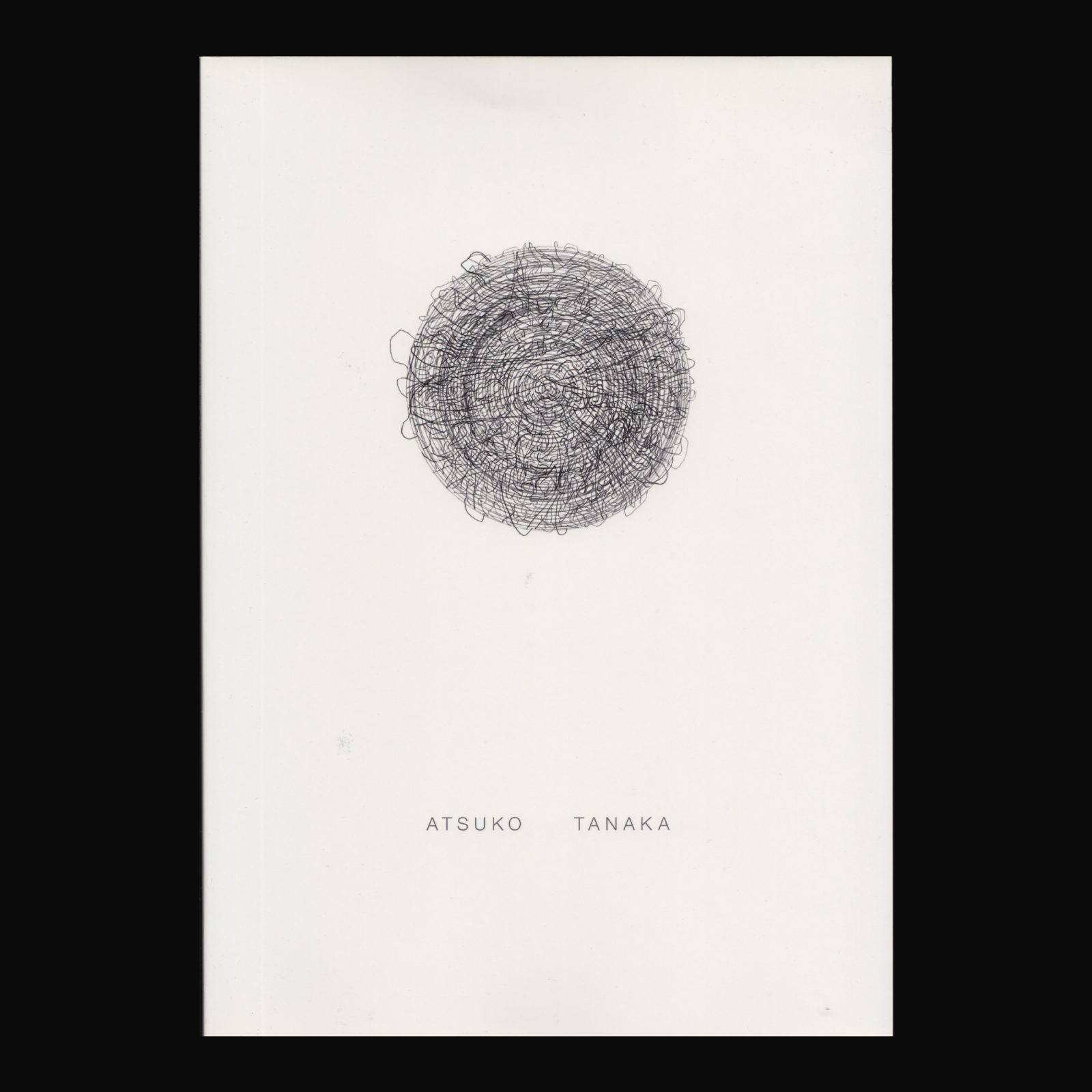

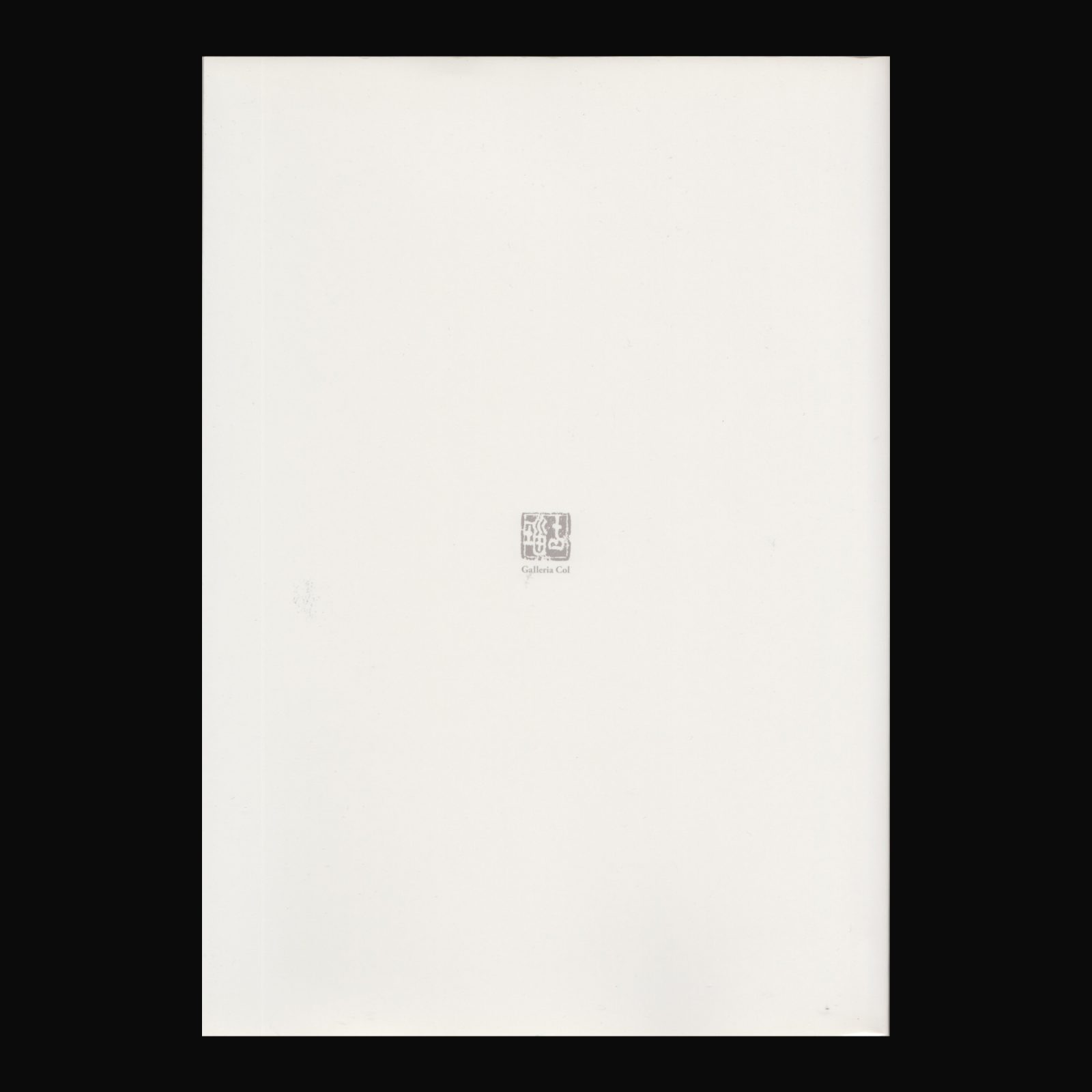
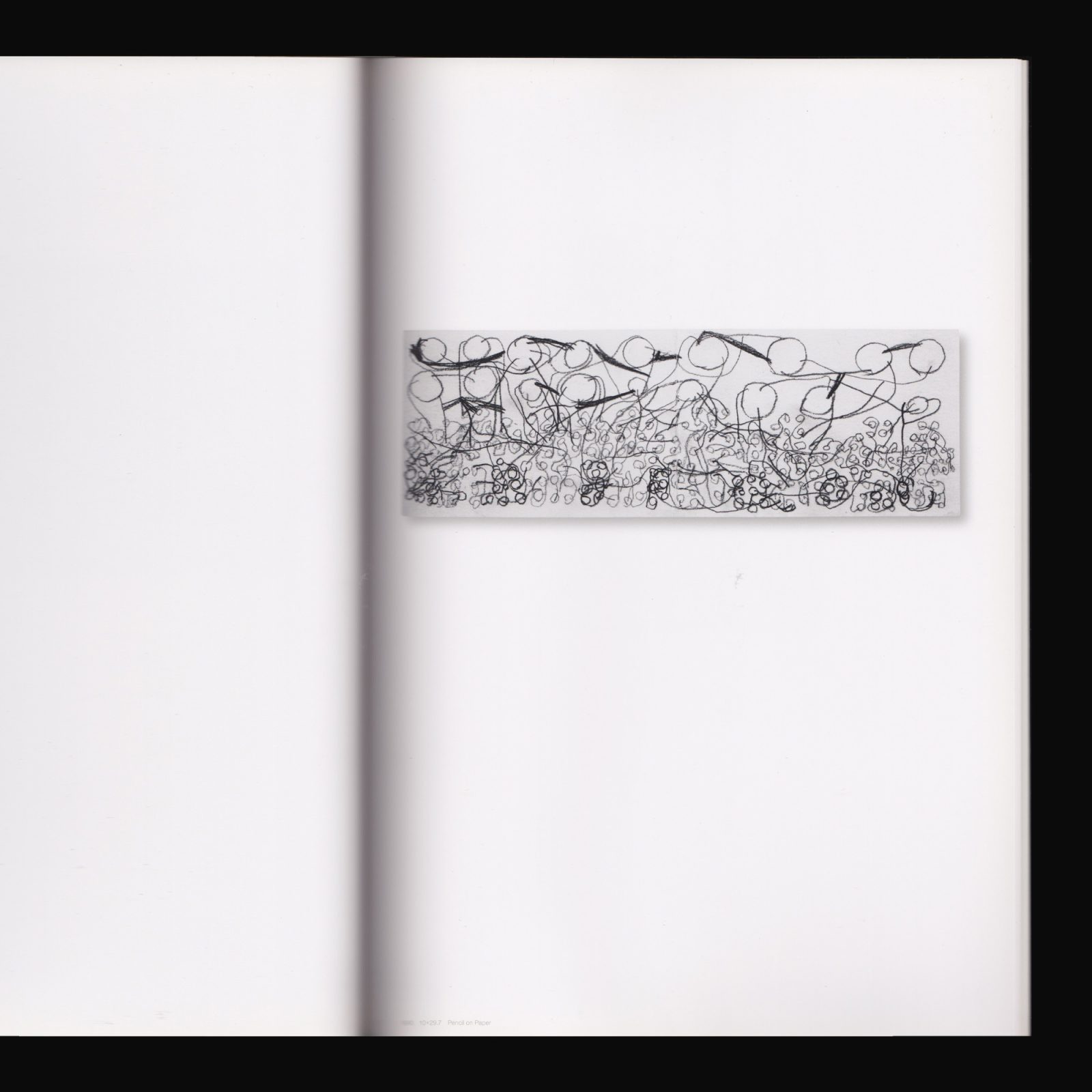
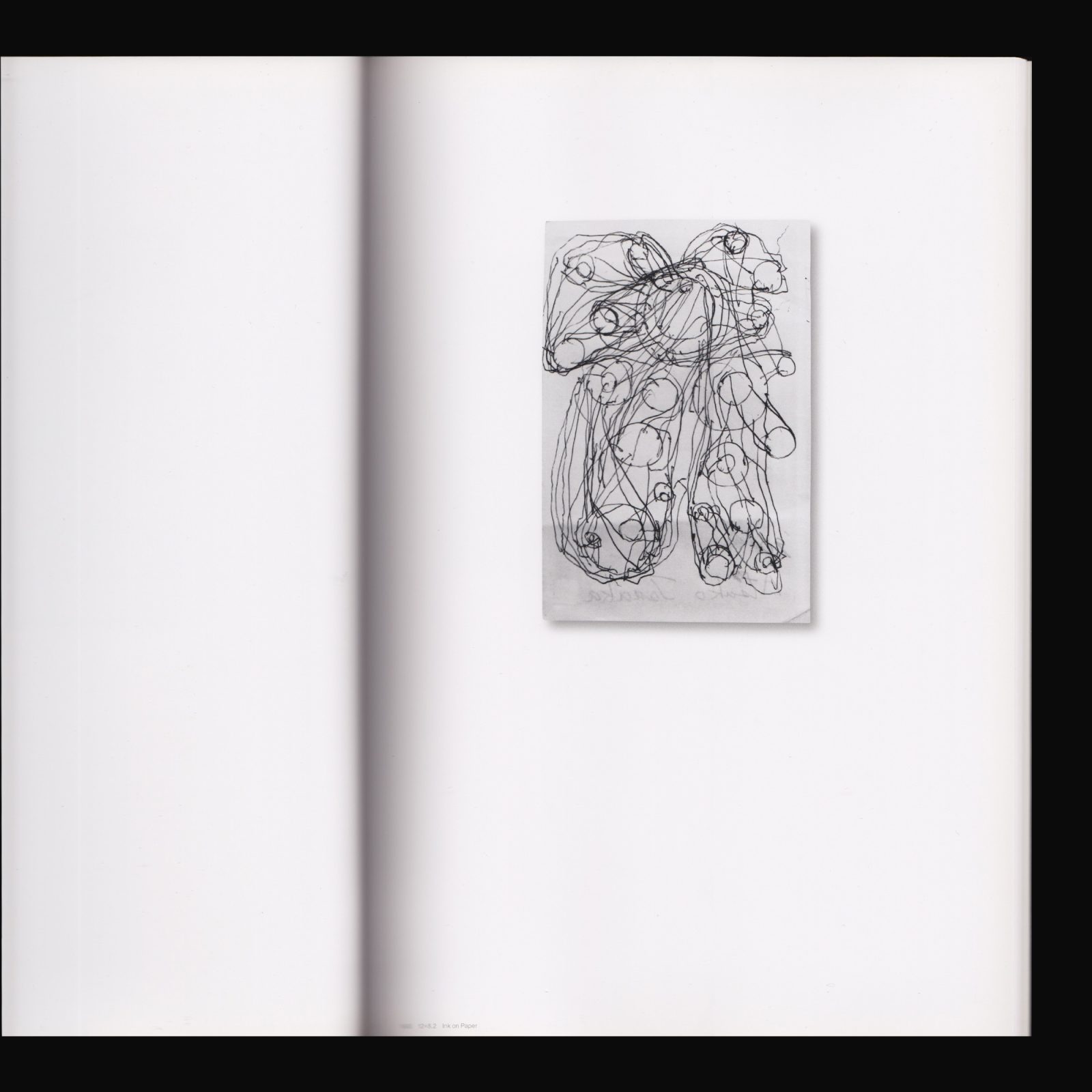
Atsuko Tanaka was a Japanese avant-garde artist best known for her Neo-Dada Electric Dress (1956), a garment made from hundreds of lightbulbs painted in primary colors. This iconic work, which she wore to exhibitions, functions as a conflation of Japanese traditional clothing with modern urbanization, bringing an unexpected and challenging interpretation to both. “I wanted to shatter stable beauty with my work,” Tanaka once said. A member of the Gutai movement, much of her work used domestic objects like lightbulbs, textiles, doorknobs, and doorbells. With these objects, the artist was able to create work about the body without a body present. She maintained a broad practice that included performance “happenings,” sculpture, and installation, while her later work focusing on two-dimensional painting, with colorful organic abstract shapes connecting circles and lines.
*Please note this publication is secondhand and has some traces of previous ownership.